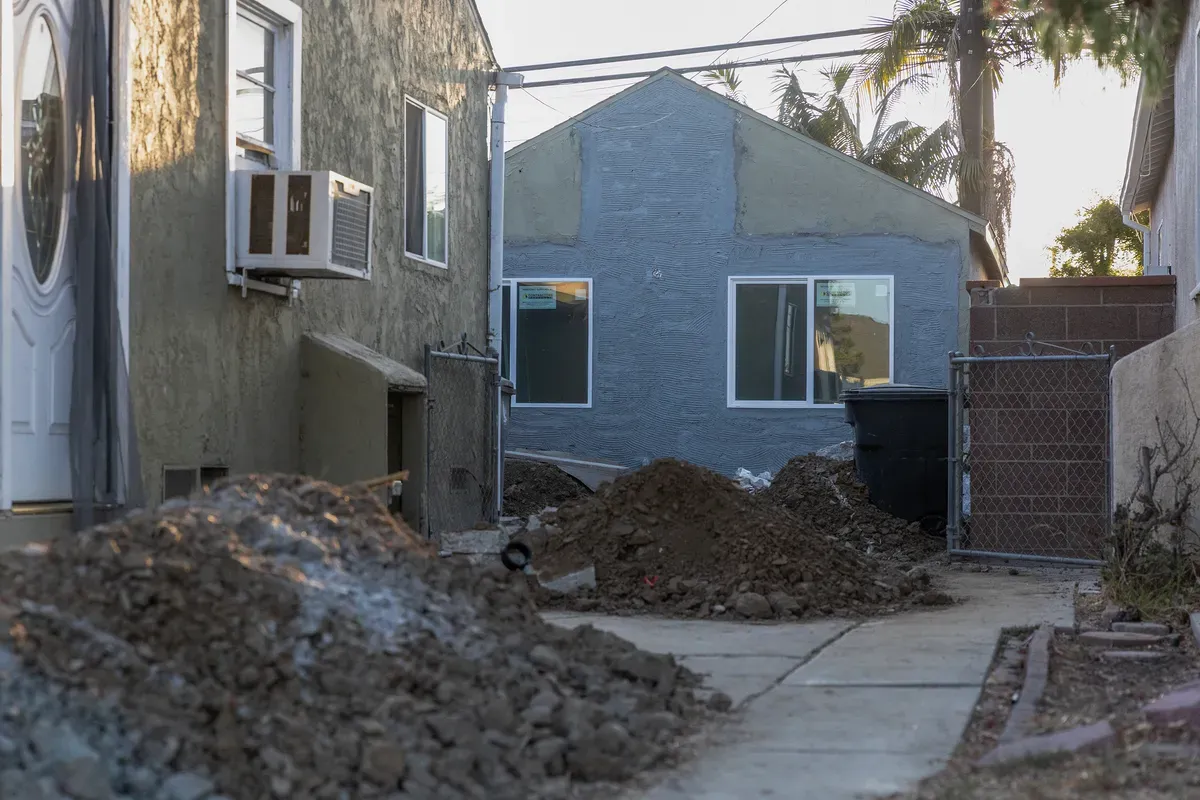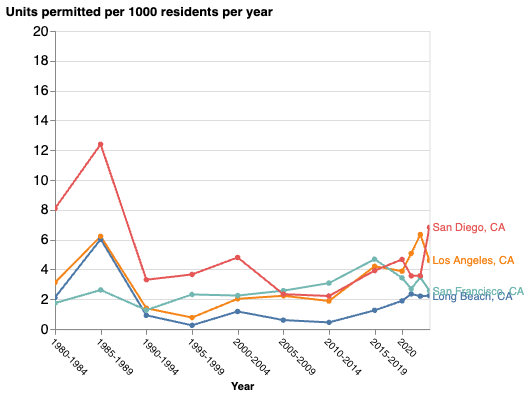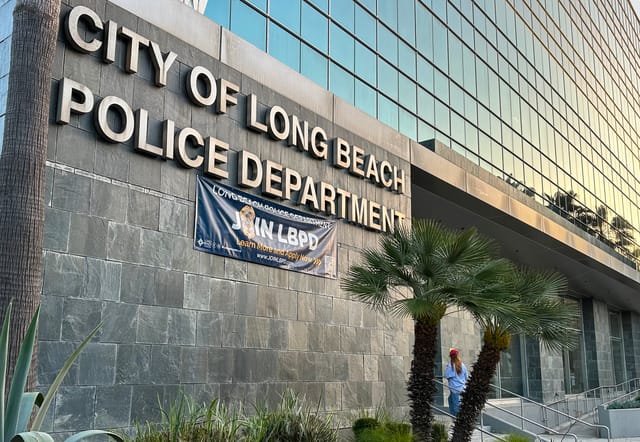Column: How to build lots of affordable homes in Long Beach without government subsidies
All the city has to do is change the restrictive land use rules.

Long Beach is in the middle of a housing crisis that is pricing people out as costs go up.
While one of the solutions to the problem is new supply, a good question is how to provide affordable homes in the process.
To answer that question, the city is trying something new.
As part of a pilot program, Long Beach is giving 10 homeowners up to $250,000 in low or even zero interest loans to build ADUs, or accessory dwelling units, in their backyards.
The catch is that those new homes must be rented out to people earning less than 80% of the Los Angeles County area median income.
But, let’s be honest. While a few lucky homeowners will get a financial benefit from this, it's unlikely to scale up enough to make a serious dent in affordability for the city.
The biggest obstacle to production on the level we need, though, is not securing a loan. It’s the restrictive zoning laws that have limited what homeowners can build for decades.
Long Beach has been among the lowest producers of all types of housing in the state since the 1990s. It’s been 30 years since we allowed more housing permits per 100,000 residents than San Francisco, Los Angeles or San Diego—three California cities that have intense housing crises themselves.

But that’s not because of a lack of low interest loan financing. It’s because 62% of Long Beach’s residential land ADUs used to be against the law.
Until a state law passed in 2016 ADUs were not legal to build across more than half of the city.
Anybody hoping to put as much as a granny flat behind their home would have to ask the city for special permission, a long and expensive process that most people would simply avoid.
Now that they are allowed, Long Beach is expecting ADUs to make up a significant portion of their RHNA requirements (state mandated housing production goals).
And since 2020, the city has received thousands of applications for ADUs, according to the Watchdog's Jason Ruiz, who has covered the city council and reported on housing and this crisis for more than a decade.
But the reason for that change is that the zoning laws now permit that type of construction.
However, some cities like San Diego have figured out how to go even further, and are spurring an affordable building boom in the process, without government subsidies from your tax dollars.
San Diego’s Bonus ADU program is built to supercharge the classic granny flat and provide affordable homes in the process.
It allows homeowners to build an additional home on their property for every one that is income restricted.
This way, the city ends up with an affordable home and a market rate unit, without any taxpayer dollars.
And the best part is, this small regulatory change is providing far more than 10 affordable homes. The number of ADUs the city allows has gone up significantly in the past few years and continues to grow, as more people are taking advantage of the new rules.
According to the Los Angeles Times, 2,867 ADUs were permitted between 2018 and 2022 in San Diego, while Long Beach allowed roughly half of that.
Of course, with a population of only about 500,000, compared to San Diego’s 1.4 million, that means Long Beach still did pretty well. But we can go much further.
A bonus ADU program like the one in San Diego could help keep rents from growing and provide homeownership opportunities, thanks to another state law that lets people sell their ADUs like a condo.
And we know that changing the rules will lead to building lots of housing because it’s exactly what happened when we changed the rules for the Downtown area and a small chunk of the city in the southeast by the intersection of 2nd Street and PCH.
Thousands of new homes were built, and thousands more are on their way. But even that isn’t enough. We need to expand those changes to the rest of the city.
More subsidies for homeowners are not going to fix the housing crisis. The only way to do that is by removing the restrictive land use rules that have limited building for decades.

We need your support.
Subcribe to the Watchdog today.
The Long Beach Watchdog is owned by journalists, and paid for by readers like you. If independent, local reporting like the story you just read is important to you, support our work by becoming a subscriber.





